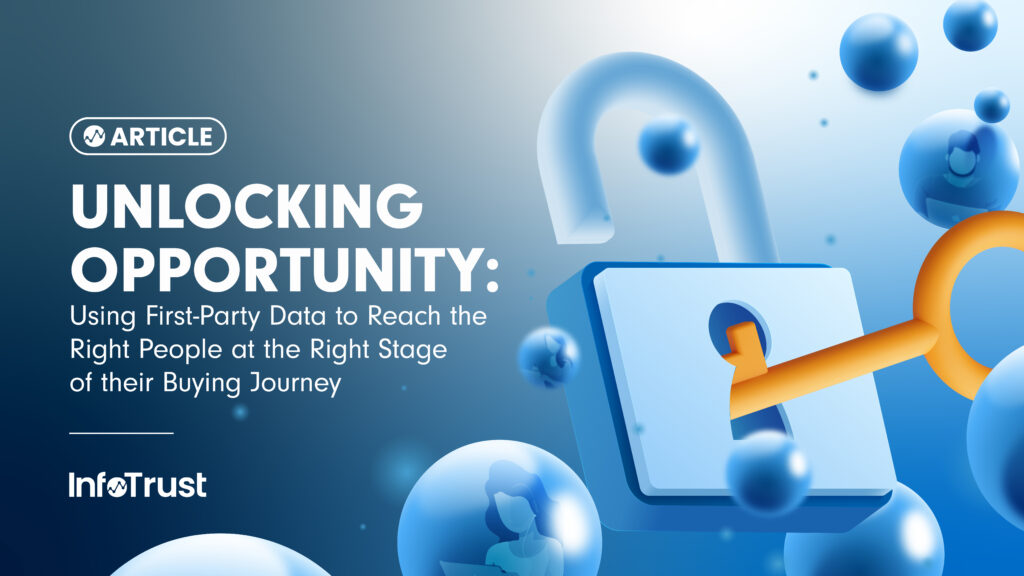A holistic, full-funnel strategy is essential for digital marketers who aim to maximize the potential of their campaigns. The buying cycle is often not linear; consumers can move fluidly between awareness, consideration, and decision-making phases, often returning to earlier stages as they seek more information or reassurance. To effectively support their decision-making process, it is crucial to deploy tailored tactics that resonate with customers based on their specific context and stage in this journey. By doing so, marketers can ensure they are not only reaching the right people but also delivering the right message at the right time, ultimately leading to stronger customer relationships and improved conversion rates. In this article, we will discuss how harnessing first-party data can empower digital marketers to design personalized experiences, cultivate loyalty, and navigate the complexities of the modern buying cycle with confidence.
In a rapidly changing digital landscape marked by shifting consumer behavior and tightening privacy regulations, the value of first-party data has become increasingly pronounced. A McKinsey & Company report found that businesses that use analytics extensively to drive decisions are 2.6 times more likely to have a significantly higher ROI than competitors, 45 percent vs 18 percent. While recent announcements suggest that third-party cookies will not be deprecated by Google Chrome, savvy digital marketers understand that relying solely on external data is a high-risk strategy that can limit their campaigns’ effectiveness and misses an opportunity to capitalize on a competitive advantage. Instead, leveraging first-party data assets offers a wealth of opportunities to engage, nurture, and convert audiences at every stage of their buying journey.

Top and Mid-Funnel Strategies: Optimizing Bids for Display and Search with DV360 and SA360
As customers engage in their buying journey, focusing on both top and mid-funnel strategies is crucial for effectively guiding them toward conversion. At the top of the funnel, display advertising serves as a potent tool for creating brand awareness and capturing the attention of new audiences. In this context, platforms such as Google’s Display & Video 360 (DV360) provide features that allow advertisers to set optimized bids in alignment with their campaign objectives. Advertisers can use the built-in custom bidding capabilities in DV360 to adjust their strategies by defining specific targets, including impressions, clicks, or conversions, which can help them enhance visibility and engage a diverse audience.
Moving into the mid-funnel, search advertising becomes increasingly important as potential customers actively seek information about products or services. Google’s Search Ads 360 (SA360) offers a platform designed for optimizing search campaigns using data-driven bidding strategies. Advertisers can use built-in features such as Smart Bidding, which automates bid adjustments based on real-time factors like device, location, and user behavior. These capabilities help ensure that search ads are displayed to users who are actively seeking information, providing them with the relevant content they may need before making a decision.
To further enhance bid optimization in both DV360 and SA360, integrating first-party data provides additional insights that can drive performance. By incorporating data points such as previous interactions, purchase history, or predicted future revenue, marketers can fine-tune their bidding strategies to prioritize users who are more likely to engage with their ads or convert down the line. For instance, in display advertising, this could mean adjusting bids to target users who have previously visited the website or engaged with specific product categories. In search advertising, first-party data can be used to increase long-term growth and profitability by adjusting bids based on the predicted future revenue for the customer.
In summary, by optimizing bids across both display and search channels through DV360 and SA360 respectively, and leveraging the insights derived from first-party data, marketers can create cohesive strategies that nurture potential customers at both the top and mid-funnel stages. This comprehensive approach not only enhances engagement but also lays the groundwork for more conversions as users progress further along their buying journey.
Bottom-of-Funnel Strategies: The Role of Retargeting and Propensity Modeling
As potential customers move down the marketing funnel, they enter the consideration and decision-making stages, where retargeting becomes an effective strategy for driving conversions. Retargeting involves displaying ads to users who have previously interacted with a brand, whether by visiting its website, viewing a product, or engaging with its content. This approach serves as a reminder and encourages users to return and complete their purchase, capitalizing on their prior interest and familiarity with the brand.
To further enhance the effectiveness of retargeting efforts, many advertisers turn to propensity modeling. This technique involves building a classification model that analyzes historical data to predict which users who have not yet converted are most likely to do so in the near future. By examining various factors—such as past behaviors and engagement patterns—marketers can identify segments of their audience that exhibit higher conversion potential. This predictive capability is essential in optimizing ad spend and focusing resources on individuals who are more likely to respond positively to targeted campaigns.
Once propensity models have been developed, advertisers can leverage the insights gained to refine their audience targeting in retargeting campaigns. By concentrating efforts on those identified with the greatest likelihood of converting, marketers can drive higher conversion rates and enhance the efficiency of their campaigns. Utilizing audiences informed by propensity modeling allows advertisers to create more personalized and relevant messaging, addressing the specific needs and motivations of users as they make their final purchasing decisions. In this way, integrating retargeting strategies with predictive modeling not only maximizes the impact of marketing efforts but also effectively nurtures leads who are on the verge of converting.
Driving Long-Term Loyalty: The Role of Customer Lifetime Value in Marketing Strategies
When considering the purchase funnel, it’s essential to recognize that it shouldn’t be viewed as a one-time linear process, but rather as a continuous loop that fosters long-term engagement and drives repeat purchases over time. This perspective encourages marketers to think beyond the initial conversion, emphasizing the importance of nurturing customer relationships to ensure loyalty and maximize lifetime value.
Customer Lifetime Value (CLV) modeling represents a vital tool in achieving this goal. CLV provides marketers with insights into the future revenue potential of their customers by predicting how much value a customer will bring throughout their relationship with a brand. Instead of solely focusing on historical spending, CLV allows marketers to assess the future revenue potential and profitability of customers, enabling them to make more informed decisions about customer acquisition, retention strategies, and resource allocation.
By employing CLV models, marketers can visualize their customer base across multiple dimensions. For instance, they can develop specific strategies and programs for customers based on their past spending and predicted future value. Loyal customers who have been the top spenders historically and who exhibit high future revenue potential should be prioritized for retention efforts. At the other end of the spectrum, customers who are either low-value or have likely churned can be targeted through cost-effective advertising strategies to ensure that these campaigns maintain a positive ROI. Third, the model can also identify those customers who are newer to the brand but are expected to become loyal over time, marking them as a key focus area for engagement initiatives. Lastly, the model can highlight the pre-churn group—customers who have historically spent significantly but are showing signs of disengagement. By identifying this segment, marketers can develop targeted strategies aimed at re-engaging these individuals and preventing potential churn.
Incorporating CLV insights into campaign optimization empowers marketers to allocate their resources strategically and tailor their messaging based on the specific needs of each customer segment. Ultimately, this approach not only drives immediate conversions but also fosters long-term loyalty, ensuring that customers continue to derive value from their relationship with the brand long into the future.
Conclusion: First-Party Data as the Cornerstone of Effective Digital Marketing
In the current landscape of digital marketing, first-party data plays a crucial role in informing various strategies. From top-funnel display advertising in DV360 to mid-funnel search campaigns in SA360, first-party data allows marketers to enhance their bidding strategies, contributing to improved efficiency at these stages of the customer journey. As the customer progresses down the funnel, propensity modeling is utilized to optimize performance in bottom-of-funnel campaigns by identifying users most likely to convert. Finally, CLV models help drive long-term loyalty and profitability by providing insights into the future revenue potential of customers. First-party data is a versatile asset that can be employed to optimize marketing across multiple channels and allows brands to connect with their audience in ways that resonate deeply, enhancing both visibility and engagement as potential customers navigate their buying journey.
As digital marketers continue to refine their practices in an increasingly competitive landscape, prioritizing first-party data will be key to unlocking sustained success and long-term growth. By leveraging its potential to inform bid optimization strategies, retargeting campaigns, and customer retention strategies and initiatives, brands can ensure they are not just meeting the immediate needs of their customers, but also working to enhance loyalty and engagement over time.


